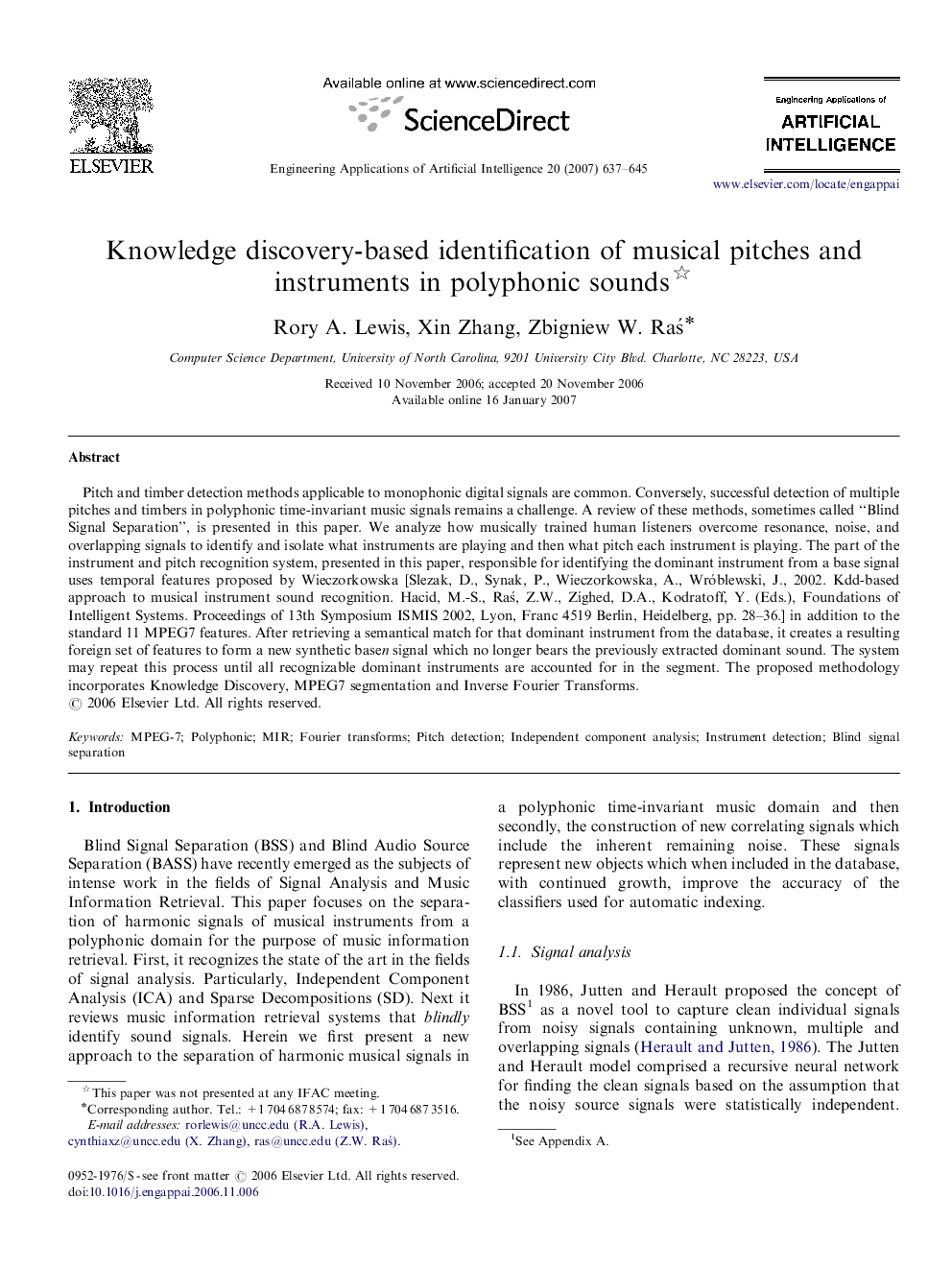| کد مقاله | کد نشریه | سال انتشار | مقاله انگلیسی | نسخه تمام متن |
|---|---|---|---|---|
| 381573 | 1437504 | 2007 | 9 صفحه PDF | دانلود رایگان |

Pitch and timber detection methods applicable to monophonic digital signals are common. Conversely, successful detection of multiple pitches and timbers in polyphonic time-invariant music signals remains a challenge. A review of these methods, sometimes called “Blind Signal Separation”, is presented in this paper. We analyze how musically trained human listeners overcome resonance, noise, and overlapping signals to identify and isolate what instruments are playing and then what pitch each instrument is playing. The part of the instrument and pitch recognition system, presented in this paper, responsible for identifying the dominant instrument from a base signal uses temporal features proposed by Wieczorkowska [Slezak, D., Synak, P., Wieczorkowska, A., Wróblewski, J., 2002. Kdd-based approach to musical instrument sound recognition. Hacid, M.-S., Raś, Z.W., Zighed, D.A., Kodratoff, Y. (Eds.), Foundations of Intelligent Systems. Proceedings of 13th Symposium ISMIS 2002, Lyon, Franc 4519 Berlin, Heidelberg, pp. 28–36.] in addition to the standard 11 MPEG7 features. After retrieving a semantical match for that dominant instrument from the database, it creates a resulting foreign set of features to form a new synthetic basen signal which no longer bears the previously extracted dominant sound. The system may repeat this process until all recognizable dominant instruments are accounted for in the segment. The proposed methodology incorporates Knowledge Discovery, MPEG7 segmentation and Inverse Fourier Transforms.
Journal: Engineering Applications of Artificial Intelligence - Volume 20, Issue 5, August 2007, Pages 637–645